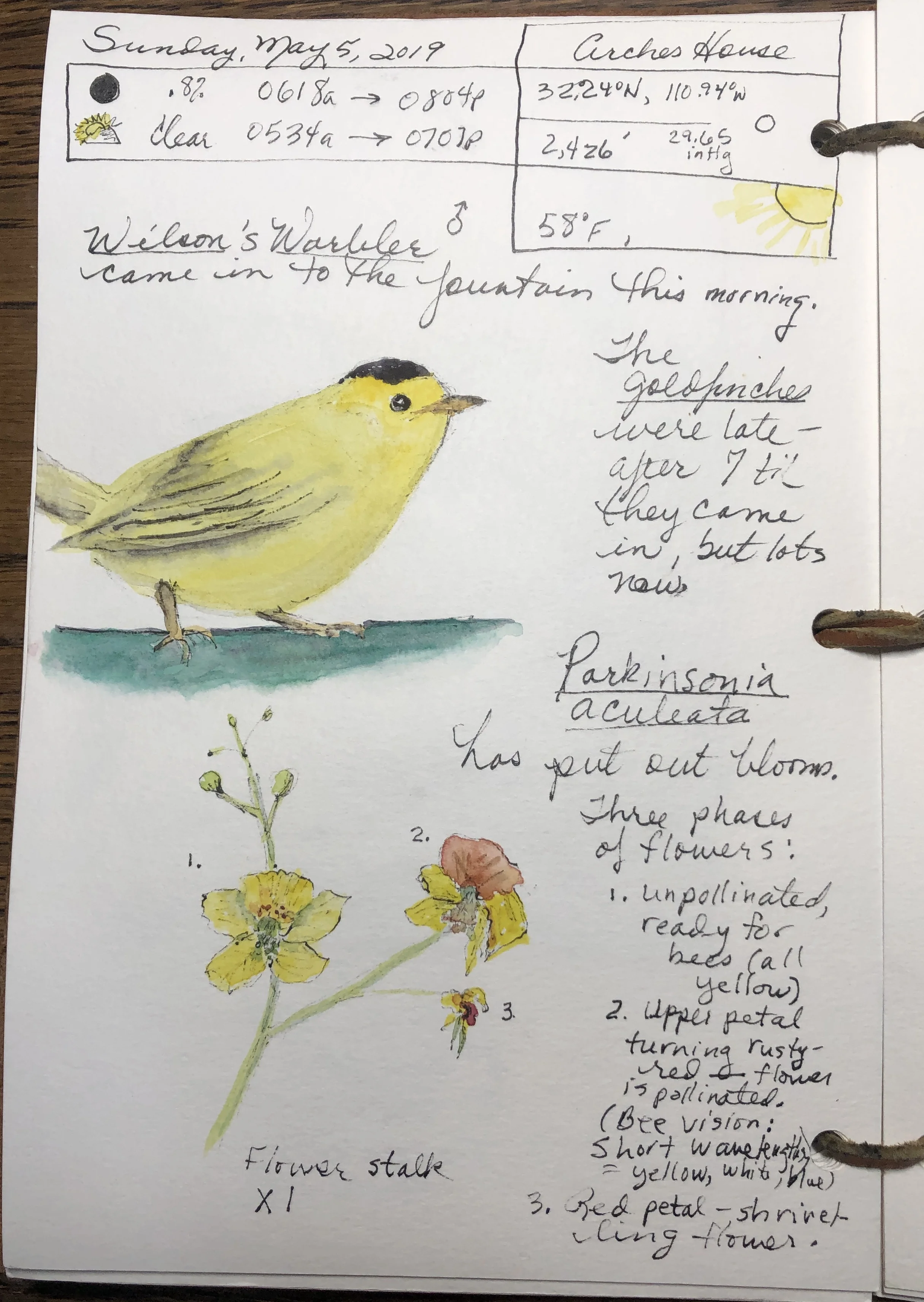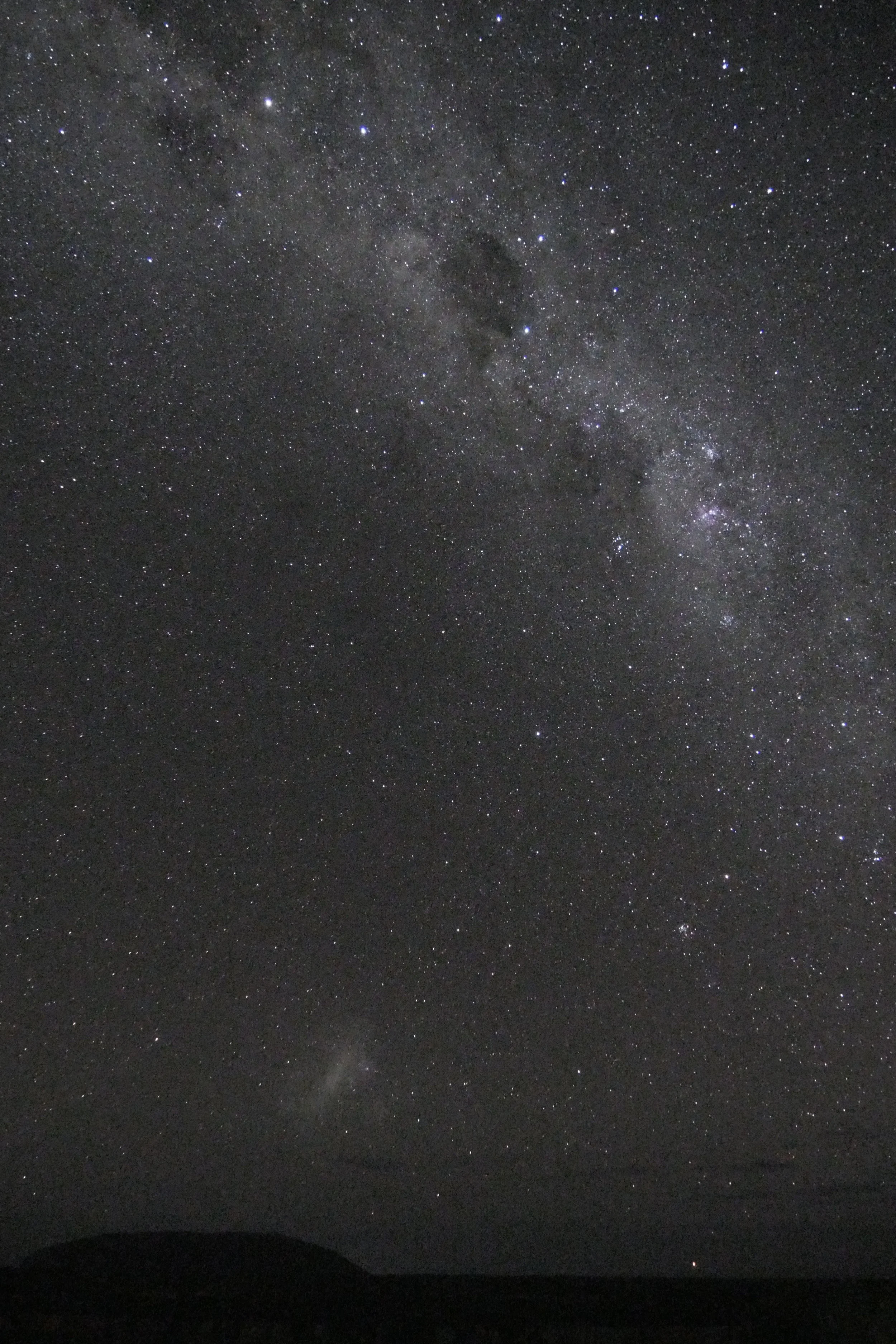A nature journal is about observing–questioning–reflecting. My pages often contain circled question marks, to remind me to research into a question sparked by close observation. They also contain ink sketches and watercolor paintings, not just because they are attractive to me and a great source of relaxation, but because the very act of drawing and painting something from life involves incredibly intense observation. The whole world of stress and deadlines and discord slips away and my brain is wholly occupied by only that thing I’m observing and drawing—a kind of meditation that results in deeper understanding and even reverence and gratitude.
I’ve been keeping journals for over 45 years, since I was 8 or 9 years old, and they became nature-oriented about 35 years ago, when I started studying ecology and evolutionary biology in college and began publishing books and articles about natural history. Data and sketches from my journals have been used in several books written by me and my husband, Jonathan Hanson.
This year I was fortunate to join the team at the University of Arizona’s Desert Laboratory on Tumamoc Hill as Art & Science Program coordinator—where helping put together classes on field sketching and science notebooks is part of my job.
In the process of working up some new courses for fall 2019 and spring 2020, I’ve been delving into the question:
Why keep a nature journal?
Is it just to make a collection of pretty pictures?
Is it simply a list of places and plants and animals?
Does it accomplish anything of value beyond a record?
With the passion of a crusader, naturalist, artist, and author John Muir Laws (The Laws Guide to Nature Drawing and Journaling) describes the value of nature journaling beyond being a mere record:
If you “train your mind to see deeply and with intentional curiosity . . . the world will open before you;”
and
“Keeping a journal of your observations, questions, and reflections will enrich your experiences and develop gratitude, reverence, and the skills of a naturalist.”
If the foundation of science is the ability to “observe-reflect-deduct,” then field notes are the key to the process. The primary skills of a naturalist—a natural scientist—include not just knowledge of the natural world, but more importantly the ability to observe carefully. A naturalist records field notes, which are about observing, questioning, and reflecting. And “observing-questioning-reflecting” = truly seeing, not just looking.
“Intentional curiosity” is a wonderful phrase, full of deeper meaning about the art of seeing. To be curious is to ask questions, to dig deeper, to learn something. When you make the commitment to take down an entry in your nature journal, you are focusing your mind both intently and intentionally. So even if I’m “only” sitting in my backyard, if I focus and pay attention with intention, I almost always learn something new. Just a few weeks ago I was drawing and taking notes on the flowers of a Mexican palo verde (Parkinsonia aculeata), which I’ve seen 100 times. But by intentionally studying it, by observing-questioning-reflecting, I learned something new: the flowers have three color phases. Why, I asked? I learned that the top flower petals change color to red after pollination, to signal to bees that their nectar is no longer available and not waste their time on those flowers but to head to the yellow ones instead.
I believe that keeping a nature journal—field notes, or field notes with sketches—and developing the skills of a naturalist is more important than ever in this digital age of noise and interruptions. The digital generation is adept at multitasking, but they could be losing the ability to focus and see deeply, to slow down and see not just look.
And with this seeing, comes gratitude and reverence for the natural world, according to Laws. And only from this will we as a society be able to come together to conserve the world’s ever-dwindling wild places and plants and animals.
I’m currently re-reading John Steinbeck and Ed Ricketts’s 1941 The Sea of Cortez: A Leisurely Journal of Travel and Research, which is the acknowledged full and shared vision of their collecting expedition aboard the Western Flyer. The account is a supremely readable travel journal, philosophical essay, a nature journal, and a catalogue of species. Steinbeck described the purpose of the journey was:
“to stir curiosity”
And so we are back to the core of nature journaling.
Laws sums thusly: “The goal of nature journaling is not to create a portfolio of pretty pictures but to develop a tool to help you see, wonder, and remember your experiences.”
And Steinbeck concurs, in the manner of prose that made him justifiably one of our greatest writers (and a great naturalist and nature journaler):
“It is advisable to look from the tide pool to the stars, and then back to the tide pool again.”



